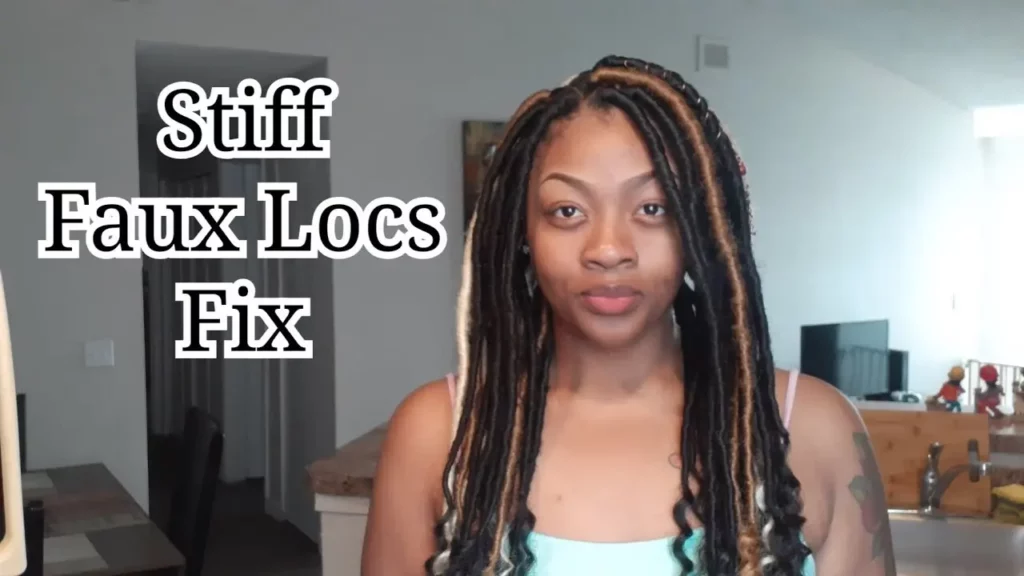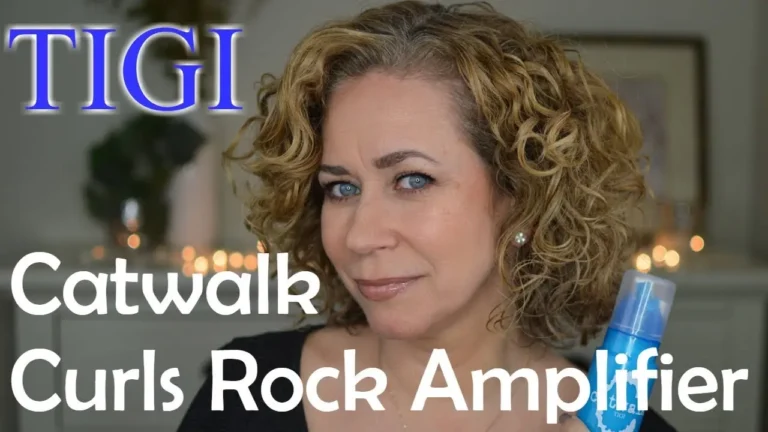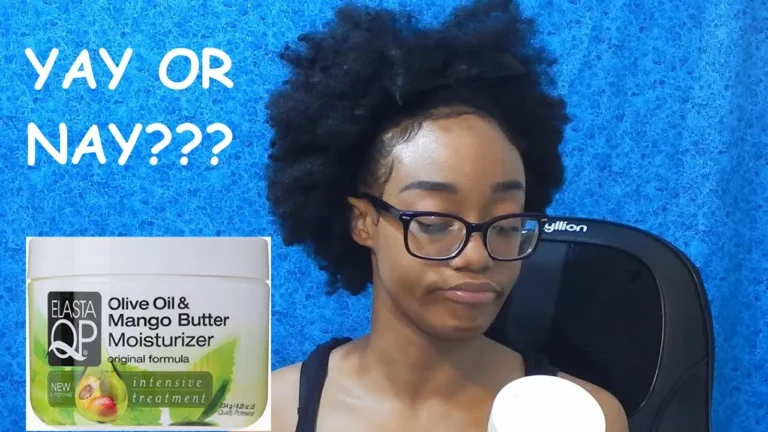
How to Soften Synthetic Dreads? (Explained)
Synthetic dreads can be very difficult to style. This article shows you how to soften synthetic dreads and make them look natural.
How to soften synthetic dreads:
- Apply a heat protectant before styling your hair with a straightening iron.
- Use a moisturizing shampoo and conditioner that is sulfate free and paraben free.
- Use a deep conditioner or protein treatment, such as the Living Proof Restore Shampoo & Conditioner, for about 15 minutes.
If your brand-new synthetic dreads are a bit stiff and shiny, you can soften them by giving them a quick boil for 30 seconds.
Your braids might look a little different after you dry them and make sure not to boil your hair for too long. Make sure the braids are safe & in good shape.
When washing your dreads, be sure to read the instructions before doing so. Some types of dreads are softer than others and you shouldn’t put them in boiling water because that could ruin them.
To soften these ends, all you need to do is roll them on the tips of your fingers, which will also make them look more natural as they wear down.
How to Soften Dreadlock Extensions?
Dreadlocks extensions can be a pain to maintain, as they can cause headaches and breakage. To avoid this, you should use these techniques to soften the extensions.
The following are some ways that you can soften dreadlock extensions:
- Use a leave-in conditioner with natural oils and moisturizers that will help keep your hair hydrated and healthy;
- Wash your hair with a sulfate-free shampoo twice a week;
- Use diluted shampoo on dry or wet hair to remove buildup.
Dreadlocks can be difficult to maintain and take time to grow out. However, they can also be very versatile and beautiful when done right.
One method for softening dreadlock extensions is using baking soda as a shampoo and conditioner alternately. This helps remove any residue on the hair without stripping it too much of its natural oils.
How to Soften Stiff Locs?
Locs are a hairstyle that is characterized by the use of braids, cornrows, twists, or dreadlocks. Locs can either be worn in a style that is neat and tidy or in an afro-centric style.
Softening stiff locs:
The best way to soften your locs is to use coconut oil. You should apply the oil on your scalp and hair while they are dry. You should then cover your hair with a towel and let it sit for about 30 minutes before you rinse it off with cool water.
You can also try using conditioner to soften your locs. Apply the conditioner on your scalp and leave it on for at least five minutes before rinsing off with cool water.
How to Care for Your Synthetic Dreads?
Synthetic dreads have become a popular hairstyle that is trending in today’s society. However, they are still very fragile and require care to maintain them.
Here are some tips on how to take care of your synthetic dreads:
- Be sure to wash your synthetic dreads with shampoo and conditioner at least once a week.
- Use a silicone-based product for styling your dreads into braids or twists.
- Make sure you avoid tight ponytails or knots when styling your synthetic dreads.
It can take a while to make dreads, but the time and effort spent in the process is very worth it. If your hair is short, you can wait until it grows out enough for dreads.
When you want a different style and don’t want to commit to the pain or hassle of re-doing your real hair, lock extensions are here to help. All you need is low maintenance maintenance that last some time, then remove them and go back to your original style.
Artificial dreads come in a wide range of colors and hair lengths to match your personality. They also come with stents to help them hold their shape and look realistic. If you are looking for added length, you can use them on your real dreadlocks.
Another great thing about synthetic loc extensions is that they are re-usable and pretty affordable. They will last you for up to 6 months if you take good care of them.
How to Put Fake Dreadlocks in your Hair?
Fake dreadlocks are a hairstyle that is often worn by celebrities. Some people may not be able to grow dreadlocks naturally and so they opt for fake ones.
How to Put Fake Dreadlocks in your Hair:
- If you want to get a fake dreadlock, you first need to get your hair wet and then dry it with a towel.
- Next, take two or three rubber bands and secure them around the hair at the top of the head.
- Take a section of hair from the front of your head and twist it around the rubber band on top of your head.
- Take another section of hair from the back of your head and twist it around the rubber band on top of your head as well.
- Continue twisting sections of hair until your finish with the strands
It’s a pain to do it yourself, and the time you put in could take hours of your life away. Experienced stylists can usually get the job done in an hour or less.
One of the nicest things about dreadhead salon location is that they have a great number of specialists. If you schedule an appointment, you’ll be able to spend several hours getting your hair done or in this case, a dreadhead.
The process for installing artificial dreads on your own is quite easy and straightforward. There are lots of helpful instructional videos to help you through the process.
Do Synthetic Dreadlock Extensions Damage your Hair?
Some people may have a hard time feeling like dreadlocks are the right hairstyle for them. There may be some discomfort while they’re getting used to their new hairstyle, but it usually only lasts a short time.
This can be very problematic and a source of a lot of frustration, as the plastic material your extensions are made out of may also cause skin irritation. This process can even appear to be folliculitis if it progresses into an infection.
The itchiness can be a little difficult to deal with at first but after a few days, it usually subsides. Some cases may persist, and make it hard or impossible to wear synthetic hair
Can you Wash Synthetic Dreads?
Do you have synthetic dreads?
If so, then you should know that you can wash them.
It’s important to keep your dreads clean and maintain their health.
You may be wondering if synthetic hair is safe to wash like natural hair. The answer is yes, but it’s important to do it right.
Washing synthetic dreads is relatively easy. You can shower & shampoo your hair whilst wearing locs. Just make sure to use a shampoo that is meant for dreads and skip a conditioner.
The use of a proper amount is important for not ruining your fake dreads! Beginning with your fingertips, work the shampoo into the scalp.
Rinse well to be sure that no excess water is left in hair. You will know it’s time to remove when all traces of shampoo have been removed and your hair naturally air dries out on its own.
Dealing with dreadlocks would be a lot easier if you washed them in the morning. This way, they will be completely dry by the time you need to sleep at night.
Avoid washing your dreads unnecessarily. Opt for this timeframe to make sure they stay in good condition and remain full-bodied longer.
Synthetic hair won’t allow sebum oils or smells to build up at the scalp and will never leave you looking greasy.
This is because it has a chemical coating that prevents any build-up. Synthetic fibers have also been known to absorb pollutants like cigarettes, increasing the chances of developing allergies or other harmful substances.
Wear a shower cap when you’re in the shower on non-washing days.
How to Dry your Synthetic Loc Extensions?
There are multiple ways to dry your synthetic loc extensions. One way is by using a blow dryer that has a low heat setting.
Another way is by using a diffuser brush, which will help you distribute the heat evenly throughout the extension.
The key is to make sure that you use enough heat without being too hot in order to avoid damaging the synthetic fibers on the extension.
How to Resealing Synthetic Locs?
A lot of people are using synthetic locs as a way to change their look and feel. However, they are also not able to maintain them.
There are a few ways that you can reseal your synthetic locs. Here is what you should do:
1) Clean your hair with shampoo and conditioner
2) Apply moisturizer or oil on the hair before sealing it in the bag
3) Seal the bag with a towel
Synthetic Locs are a type of hair extensions that can be used to create a variety of looks. They are made from synthetic hair strands, which makes them easier to maintain and less expensive than human hair extensions.
It is common for people to use synthetic locs for wearing as weaves or braids but they can also be used for creating dreadlocks, headbands, and other various styles.
There are many different types of synthetic locs available on the market such as lace-front, ponytail, and cornrows.
How to Style Synthetic Dreads?
Dreadlocks are not a hairstyle that can be styled easily. They come with their own unique challenges such as tangles and knots. However, there are some tricks you can try to make them easier to manage.
- Wash your hair and use a deep conditioner before you start styling dreads. This will help loosen up the knots and tangles so they’re less likely to get caught in the brush or comb while you’re styling them.
- Use a loofah on your scalp before applying moisturizer, which will help remove any excess oil that might otherwise cause tangles or knots.
- Be sure to brush through your dreads after they’ve been styled, since brushing helps distribute the oils evenly throughout the hair, which will prevent knots from forming.
The process of styling synthetic dreads can be difficult, because they are not as flexible as natural hair and it can be tricky to make them look like the style you want.
Synthetic dreads are often used by individuals who want to change their look without having to cut off their natural hair.
Sleeping with Synthetic Dreadlocks
It’s best to remove your headscarf and other potentially damaging accessories before going to sleep. Furthermore, you should use safe hair products for your synthetic dreadlocks.
Often you’ll find that the night before your hairstyle is looking a bit worse for wear. Not necessarily because of bed head, but mostly from involuntary movement during sleeping. That’s what caused your hair to knot up in tangles and become frizzy and unruly.
Night caps made from fabric will hold your hair in place without causing excessive friction. Hair bonnets used for wigs can also reduce the risk of skin reactions.
Sleeping on a silk pillowcase is good for your hair. It allows your natural oils to stay on the surface of your hair and never rub off. And this will in turn extend the longevity of your fake locs.
How Long Can You Keep Synthetic Dreads in?
Synthetic dreads are often seen as more durable, because they can last for a longer period of time than natural dreads.
However, synthetic dreads are not as easy to maintain as natural ones, and need to be taken care of more often.
One major concern with synthetic dreads is how long they can last. Some people might think that these hair extensions will last forever, but this is not true. They can only last for about three months before falling out or breaking off.
How to Make Synthetic Dreads Less itchy
Synthetic dreads come with a number of benefits over natural hair dreads, but they can also cause irritation around the scalp due to their material composition. To make synthetic dreads less itchy and more comfortable, you should use essential oils to keep the scalp hydrated.
There is no one-size-fits-all solution for synthetic dread itchiness and there is no single way to make them less itchy. For example, some people opt for an alcohol based spray while others use a baking soda paste or an essential oil serum on their scalps before bedtime.
Conclusion:
Synthetic dreads are not as durable as natural human hair and can easily be damaged if not cared for properly. They can also be easily pulled out of the scalp and require regular maintenance to prevent this from happening.
The use of synthetic dreads is growing rapidly in popularity due to its versatility and affordability. They can be styled into many different styles such as braids, cornrows, twists or even just put into a bun or ponytail without damaging them like natural human hair would.








Comments are closed.